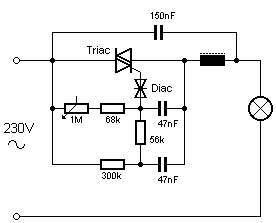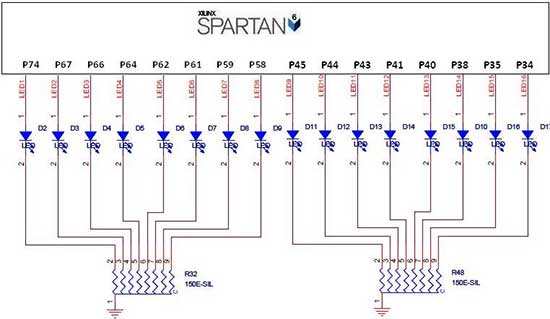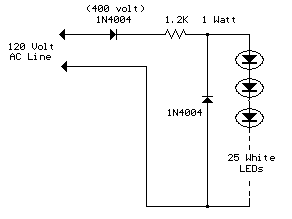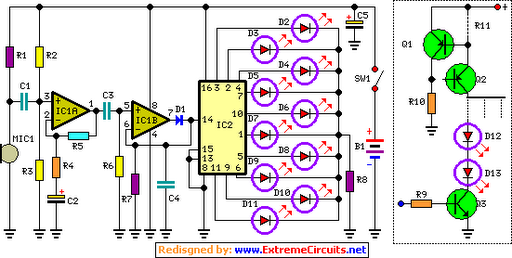
technical information for leds

Colour temperature refers to the tonal quality or shade of light. White light, for instance, is subjective and available in various hues. This guide aims to assist in identifying the most suitable shade for specific situations. A "warm" white light bulb typically has a colour temperature of up to 2800K, emitting a more orange/red hue. This association of warmth with red or orange explains the "warm" label, despite it being a cooler temperature on the Kelvin scale. In contrast, a "cool" white bulb usually ranges from 3600K to 4900K, producing a low blue colour reminiscent of ice, hence the term "cool." Full Spectrum Bulbs have a colour temperature of 5000K and above, providing bright, white light that enhances all colours. It is essential to ensure that bulbs labeled as Full Spectrum are indeed in the 5000K and above range, as not all bulbs in this range are full spectrum. For rooms decorated in reds, browns, and oranges, bulbs with a colour temperature between 2750K and 3000K are ideal. Conversely, spaces featuring green or blue tones should utilize bulbs with a colour temperature of 4000K or higher. While full spectrum lighting offers theoretical benefits, it may be perceived as too harsh for general home lighting; thus, it is best suited for fixtures where color differentiation is necessary. Most individuals prefer a colour temperature around 2700K to 3000K for a warm and cozy atmosphere. Fortunately, LED bulbs and lamps are available to meet a wide range of lighting colour temperature requirements.
Lumen (lm) is the SI unit of luminous flux, representing the quantity of light emitted over a square foot by one candle power at a distance of one foot from the light source. For example, a dinner candle emits approximately 12 lumens, while a 60-watt Soft White incandescent bulb produces about 840 lumens. Metameric is a term describing the visual perception phenomenon where spectrally different light sources combine to create a third color. For instance, Sir Isaac Newton found that people perceive white light when blue and yellow light are mixed. The NTSC color space refers to the range of colors represented within the CIE Chromaticity Diagram when combining phosphor-based RGB sources in CRT devices like televisions and computer monitors.
The P-N Junction is the area on an LED chip where positively and negatively charged regions converge. When voltage is applied, and current flows, electrons migrate from the n-region to the p-region. This movement releases energy, generating photons with visible wavelengths, effectively producing light. The Planckian Black Body Locus is a line on the CIE Chromaticity Diagram that illustrates the color temperature of an object heated from approximately 1,000K to over 10,000K. Solid-state lighting refers to devices devoid of moving parts that can break, shatter, leak, or contaminate the environment. sRGB is a standard default color space for the Internet, created by Hewlett-Packard and Microsoft, to maintain a consistent color space across Microsoft operating systems and HP products.
Volt denotes the electrical potential difference between two oppositely charged conductors; for example, a 1.5V potential exists between the terminals of a battery. Watt is the unit of electrical power consumed by a device during operation, with many lamps rated in watts to indicate their power usage. A higher wattage typically correlates with increased light output.Colour Temperature is a term used to describe the colour tonality or shade of light. As anyone who has tried to buy a tin of white paint knows well, white is a very subjective colour available in a large number of hues. We hope this guide will help you identify the best shade for your particular situations. The "warm" white light bulb often has a colour temperature of up to 2800K. It imparts a more orange/red light on objects. Because you normally associate warmth with red or orange objects, this accounts for the "warm" descriptive name, even though it is a cooler temperature on the Kelvin scale. A "cool" white bulb commonly has a colour temperature of 3600K to 4900K. This is in the low range of blue colour, similar to ice. Hence, the "cool" adjective. Full Spectrum Bulbs have a colour temperature of 5000K and above. They impart a bright, white light that makes all colours stand out. Be sure that the bulb you choose for full spectrum applications says Full Spectrum as all full spectrum bulbs are 5000K and above but not all 5000K and above bulbs are Full Spectrum .
If you decorate with reds, browns, and oranges, you want to illuminate these rooms with bulbs that have a colour temperature in the 2750 - 3000K range. Conversely, if you happen to like green or blue colours, light these rooms with bulbs that produce colour temperatures of 4000K or above.
And while full spectrum lighting sounds good in theory, many will find this type of lighting too harsh for overall home lighting applications. It`s best to install full spectrum bulbs in those fixtures that are used when you need to differentiate between colours.
Most people prefer around 2700K - 3000K for a warm, cozy, romantic, and sheltered experience. Fortunately, our LED bulbs and lamps cover all ranges of lighting colour temperature needs. Lumen (lm) - The international (SI) unit of luminous flux or quantity of light and equals the amount of light that is spread over a square foot of surface by one candle power when all parts of the surface are exactly one foot from the light source. For example, a dinner candle provides about 12 lumens. A 60-Watt Soft White incandescent lamp provides 840 lumens. Metameric - The term used to describe the visual perception phenomenon where spectrally different sources blend into a third chroma.
For example, Sir Isaac Newton discovered that people perceive white when observing mixed blue and yellow light. NTSC color space - The range of colors within the CIE Chromaticity Diagram included when combining phosphor based RGB sources in CRTs such a televisions and computer monitors.
P-N Junction - Area on an LED chip where the positively and negatively charged regions meet. When voltage is applied and current begins to flow, the electrons move across the n region into the p region. The process of an electron moving through the p-n junction releases energy. The dispersion of this energy produces photons with visible wavelengths. In short, the area on a chip where light is produced. Planckian Black Body Locus - The line on the CIE Chromaticity Diagram that describes the color temperature of an object when heated from approximately 1, 000K to more than 10, 000K.
Solid-state lighting - A description of the devices that do not contain moving parts or parts that can break, rupture, shatter, leak or contaminate the environment. sRGB - A Standard Default Color Space for the Internet created by Hewlett-Packard and Microsoft to support a standard color space within the Microsoft operating systems, HP products, and others.
Volt - The term used to describe the electrical potential difference between oppositely charged conductors, for example there is a 1. 5V potential between the top and bottom of a battery. Watt - The unit of electrical power as used by an electrical device during its operation. Many lamps come with rating in watts to indicate their power consumption. A light source with a highe 🔗 External reference
Lumen (lm) is the SI unit of luminous flux, representing the quantity of light emitted over a square foot by one candle power at a distance of one foot from the light source. For example, a dinner candle emits approximately 12 lumens, while a 60-watt Soft White incandescent bulb produces about 840 lumens. Metameric is a term describing the visual perception phenomenon where spectrally different light sources combine to create a third color. For instance, Sir Isaac Newton found that people perceive white light when blue and yellow light are mixed. The NTSC color space refers to the range of colors represented within the CIE Chromaticity Diagram when combining phosphor-based RGB sources in CRT devices like televisions and computer monitors.
The P-N Junction is the area on an LED chip where positively and negatively charged regions converge. When voltage is applied, and current flows, electrons migrate from the n-region to the p-region. This movement releases energy, generating photons with visible wavelengths, effectively producing light. The Planckian Black Body Locus is a line on the CIE Chromaticity Diagram that illustrates the color temperature of an object heated from approximately 1,000K to over 10,000K. Solid-state lighting refers to devices devoid of moving parts that can break, shatter, leak, or contaminate the environment. sRGB is a standard default color space for the Internet, created by Hewlett-Packard and Microsoft, to maintain a consistent color space across Microsoft operating systems and HP products.
Volt denotes the electrical potential difference between two oppositely charged conductors; for example, a 1.5V potential exists between the terminals of a battery. Watt is the unit of electrical power consumed by a device during operation, with many lamps rated in watts to indicate their power usage. A higher wattage typically correlates with increased light output.Colour Temperature is a term used to describe the colour tonality or shade of light. As anyone who has tried to buy a tin of white paint knows well, white is a very subjective colour available in a large number of hues. We hope this guide will help you identify the best shade for your particular situations. The "warm" white light bulb often has a colour temperature of up to 2800K. It imparts a more orange/red light on objects. Because you normally associate warmth with red or orange objects, this accounts for the "warm" descriptive name, even though it is a cooler temperature on the Kelvin scale. A "cool" white bulb commonly has a colour temperature of 3600K to 4900K. This is in the low range of blue colour, similar to ice. Hence, the "cool" adjective. Full Spectrum Bulbs have a colour temperature of 5000K and above. They impart a bright, white light that makes all colours stand out. Be sure that the bulb you choose for full spectrum applications says Full Spectrum as all full spectrum bulbs are 5000K and above but not all 5000K and above bulbs are Full Spectrum .
If you decorate with reds, browns, and oranges, you want to illuminate these rooms with bulbs that have a colour temperature in the 2750 - 3000K range. Conversely, if you happen to like green or blue colours, light these rooms with bulbs that produce colour temperatures of 4000K or above.
And while full spectrum lighting sounds good in theory, many will find this type of lighting too harsh for overall home lighting applications. It`s best to install full spectrum bulbs in those fixtures that are used when you need to differentiate between colours.
Most people prefer around 2700K - 3000K for a warm, cozy, romantic, and sheltered experience. Fortunately, our LED bulbs and lamps cover all ranges of lighting colour temperature needs. Lumen (lm) - The international (SI) unit of luminous flux or quantity of light and equals the amount of light that is spread over a square foot of surface by one candle power when all parts of the surface are exactly one foot from the light source. For example, a dinner candle provides about 12 lumens. A 60-Watt Soft White incandescent lamp provides 840 lumens. Metameric - The term used to describe the visual perception phenomenon where spectrally different sources blend into a third chroma.
For example, Sir Isaac Newton discovered that people perceive white when observing mixed blue and yellow light. NTSC color space - The range of colors within the CIE Chromaticity Diagram included when combining phosphor based RGB sources in CRTs such a televisions and computer monitors.
P-N Junction - Area on an LED chip where the positively and negatively charged regions meet. When voltage is applied and current begins to flow, the electrons move across the n region into the p region. The process of an electron moving through the p-n junction releases energy. The dispersion of this energy produces photons with visible wavelengths. In short, the area on a chip where light is produced. Planckian Black Body Locus - The line on the CIE Chromaticity Diagram that describes the color temperature of an object when heated from approximately 1, 000K to more than 10, 000K.
Solid-state lighting - A description of the devices that do not contain moving parts or parts that can break, rupture, shatter, leak or contaminate the environment. sRGB - A Standard Default Color Space for the Internet created by Hewlett-Packard and Microsoft to support a standard color space within the Microsoft operating systems, HP products, and others.
Volt - The term used to describe the electrical potential difference between oppositely charged conductors, for example there is a 1. 5V potential between the top and bottom of a battery. Watt - The unit of electrical power as used by an electrical device during its operation. Many lamps come with rating in watts to indicate their power consumption. A light source with a highe 🔗 External reference

.gif)



